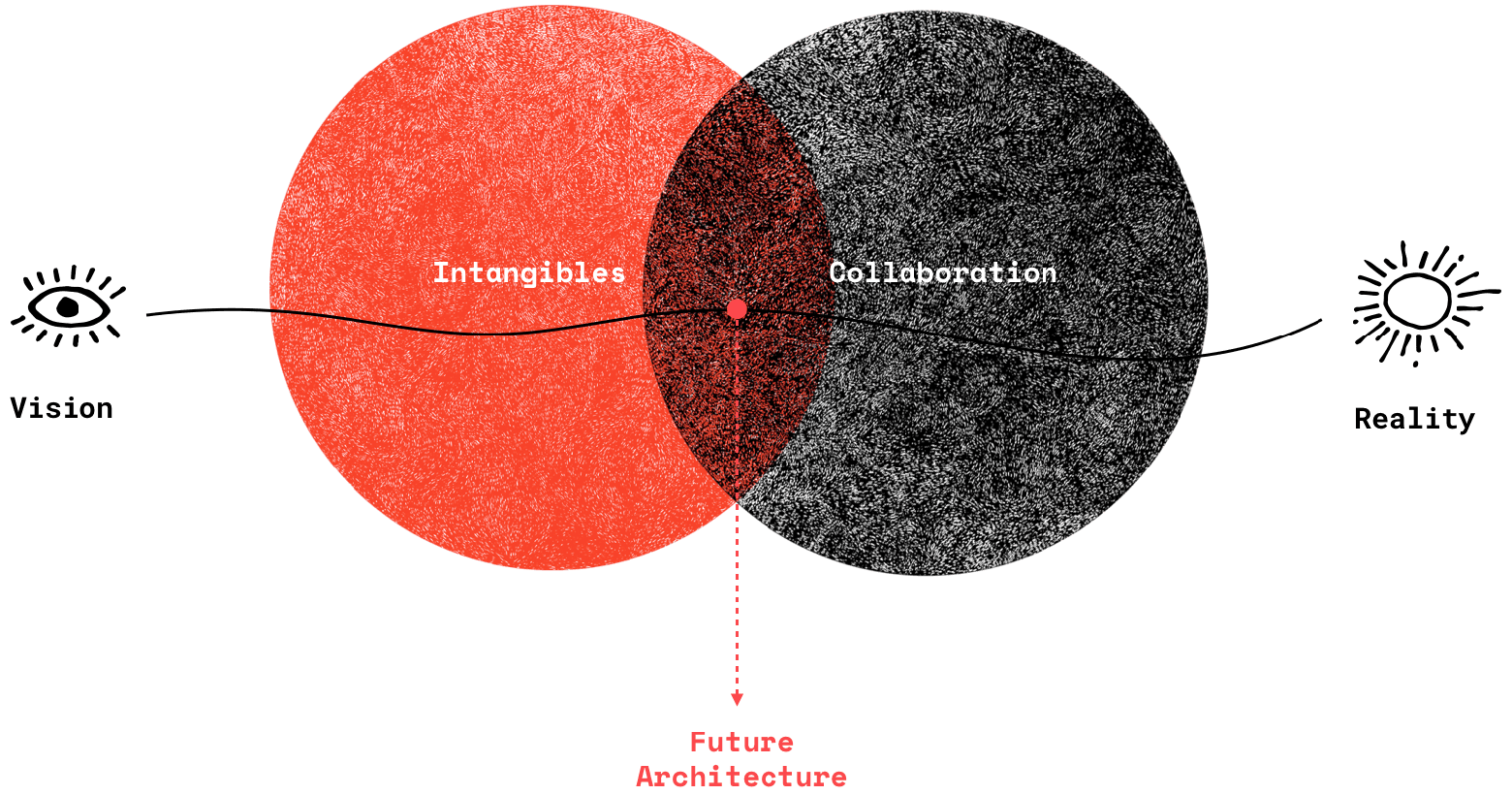Future Architecture
Origin Story
First articulated by our founder Sharon Chang, the framework and practice of future architecture is the result of her many collaborative efforts to make the world more beautiful for more people.
Through Sharon’s attempt at developing a comprehensive discipline, she recognized an imperative to galvanize collective imagination. Future architecture as an emergent discipline needs to be defined by a community of future architects actively prototyping and learning together, therefore the best way to establish future architecture is to first understand what it means to be a future architect. The Guild of Future Architects was born out of the desire to pursue this journey of awareness, learning, co-creation and transformation.
Today, future architecture represents both the ongoing evolution of Sharon’s articulated thesis and the synthesized collective wisdom from a growing community of future architects.

Our orientation to change is born of the recognition that systems-level challenges are becoming more complex by the day. The theory of future architecture holds that such complexity can be harnessed to design better futures through collaborative efforts. Furthermore, via sophisticated orchestration of intangible forms such as trust, sentiment and power dynamics, future architecture creates conditions for more comprehensive and nuanced impact. Our current understanding of future architecture includes the following frameworks:
Current frameworks
INE
Imagination / Narrative / Embodiment
The INE framework is used to calibrate the dynamic interplay between imagination, narrative and embodiment. The more radical and unencumbered our imagination gets, the more we are equipped to develop powerful narratives that align values and transcend current cultural limitations. As these narratives become more diverse and complex, we are able to evolve our identity in ways that increase our capacity to more fully embody shared values on intellectual, emotional and spiritual levels. Such elevated embodiment opens up neurological pathways that can lead to expanded consciousness, thereby enhancing our motivation and ability to imagine outside of current realities.
5C
Curiosity, Curation, Coordination, Commitment, Creation
5C provides the framework for a lifelong journey towards mastery in balancing the five elements – air, fire, water, earth and ether – within and around ourselves. The elements are mapped to five essential dimensions of any creative endeavor: Curiosity (air), Curation (fire), Coordination (water), Commitment (earth), and Creation (ether). This framework draws inspiration from multiple lineages of ancient wisdom and applies contemporary methodologies to facilitate individual practice as well as collective pursuit.
ACD
Agnostic Contextual Design
ACD is a framework used to encourage an agnostic and contextual approach to problem-solving. The goal is for individuals and collectives to responsively integrate synergistic mindsets, skills and tools to address emerging complexity.
SRM
Story / Rule / Money
SRM is a framework for systems intervention. It provides three critical lenses – story, rule, money – for analyzing any given system’s propensity to change through intentional design. Key areas for investigation include how individual stories become collective narratives, how the process of narrative co-creation helps to align values, create incentives, change behaviors and shift power structures, and how access to capital is determined by the interplay of all these elements.